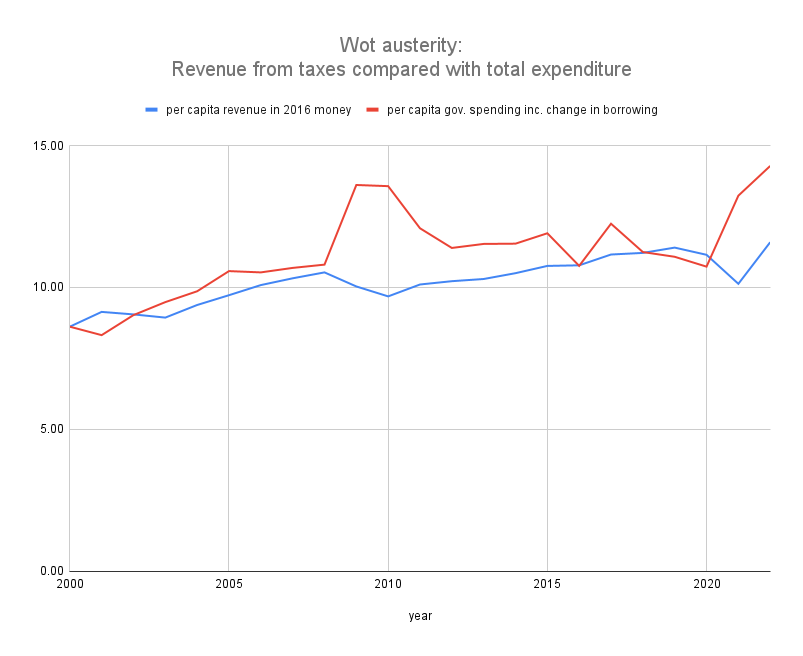We enjoyed listening to Alastair Campbell and Rory Stewart talking about recent upheavals in government on their pod cast: the rest is politics (probably available on your favorite streaming service too). But I did notice them talking about austerity and cuts as if this was a fact. Bizarrely, although I’ve looked to see where cuts have happened over the past two decades, it’s extremely hard (actually impossible) to identify them.
OK. Before you list all the things you know for a fact have been cut, I need to make it clear that I’m looking at total expenditure by the government. If lots of people get laid off from a civil service department then re-employed as contractors, I’m not counting that as a cut – whatever you think of the logic, economics or politics!
In the graph below the blue line is the amount of money raised from various taxes, per person and adjusted for inflation. In 2022 it comprised Income Tax 27%, VAT 18%, NI 18%, Corporation Tax 7%, Other 5%, Council 4% then a host of small things such as fuel, tobacco, alcohol, stamp duties making up the remaining 20%.
The red line represents government spending by adding the increase in borrowing from the previous year. Most of that borrowing is savings made by us citizens for our retirement. Hardly any of us actually buy government debt directly, but we pretty well all do via banks and financial “providers” as a proportion of our pension. Nowadays that includes civil servants such as teachers and nurses as well as fat cat investors with Self Invested Personal Pensions.

Here is a link to the spreadsheet showing figures from 2000 to 2022 I might have made a mistake in my calculations or information collecting, in which case please let me know. You can compare my figures with theGlobalEconomy.com graphs . Note that they use World Bank figure which excludes certain things such as capital expenditure on military. My figures are a cash flow and include factors such as having to pay interest on borrowing. It’s also worth looking at other statistics, on theGlobalEconomy site, indicative of “cuts” such as doctors, nurses, pharmacists and dentists per 1,000 people or pupil teacher ratio and so on.
However, assuming I am right, and there never really was any austerity, it’s interesting to think why everyone, whatever their political persuasion, continues to perpetuate the myth. My personal theory is that our ancient electoral system tends to produce a polar result in parliament, and to prevent gross inefficiency, our civil service has evolved to carry on